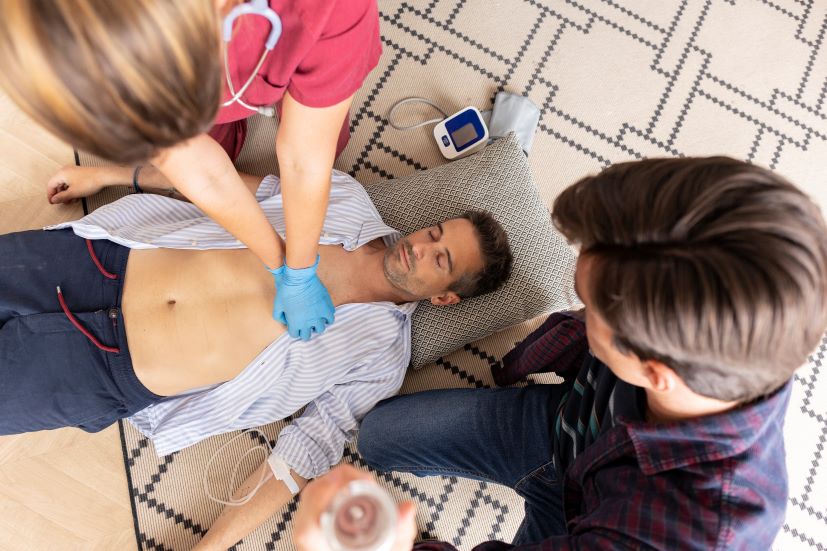Burn injuries can be one of one of the most agonizing and distressing experiences one can withstand. Whether it's a small kitchen area incident or an extreme melt from a mishap, understanding the stages of burn wound healing is critical for effective therapy and recovery. In this short article, we will delve deep into the intricacies of melt injuries, their category, healing procedures, and essential care techniques.
Understanding Burn Wound Healing Presents: Recovery Insights
Burns are classified right into various levels based upon their extent, each calling for particular medical interest and treatment. The healing procedure entails distinctive stages that should be identified to make certain correct management and rehabilitation.
What Are the Different Kinds Of Burns?
Burns are normally categorized right into three primary types:

First-Degree Burns: These influence just the external layer of skin (skin). Signs consist of inflammation, moderate swelling, and pain.
Second-Degree Burns: These expand into much deeper layers of skin (dermis), creating sores, serious discomfort, and swelling.
Third-Degree Burns: These involve all layers of skin and may damage underlying tissues. They show up white or charred and can be painless because of nerve damage.
Each kind demands varying degrees of clinical treatment and home care strategies.
The Recovery Refine: An Overview
1. Hemostasis Phase
Immediately after a melt injury takes place, the body starts the hemostasis stage to stop any type of blood loss. Capillary constrict to decrease blood circulation to the affected area while platelets aggregate to create a clot.
2. Inflammatory Phase
This phase follows hemostasis and normally lasts for 3-5 days post-injury. It nearby first aid course in Wagga Wagga entails:
- Increased blood circulation to provide immune cells. Swelling as liquids accumulate in the tissue. Pain as nerve ends end up being sensitized.
3. Proliferative Phase
Taking location from regarding day 3 to week 3 post-burn, this First Aid Training Wagga Wagga - First Aid Pro phase includes:
- Formation of brand-new cells via collagen deposition. Re-epithelialization where brand-new skin cells move throughout the injury bed. Angiogenesis-- the development of new blood vessels-- to provide nutrients to recovery tissues.
4. Renovation Phase
This final stage can last a number of months to years after a burn injury and is marked by:
- Maturation of collagen fibers. Decreased vascularity as structures mature. Potential for mark formation relying on severity.
Importance of Specialized Burn Dressings: Crucial Burn Products for Home Care
Proper dressing is critical in managing burn injuries effectively at home. Specialized shed dressings offer multiple purposes:
- They secure against infections by developing an obstacle against pathogens. They maintain moisture while allowing gases exchange which is vital for healing. Some dressings have antimicrobial residential properties that prevent infection.
It's essential to pick suitable dressings based on melt degree and dimension. For instance, hydrogel dressings are commonly suggested for second-degree burns due to their air conditioning effect.
Scar Management: Healing After Major Burns
Once a burn has actually healed, scar administration ends up being crucial for bring back function and look:

Common Misconceptions About Burn Treatment
CPR Always Restarts Heart Misconception: Debunking Common Burn Treatment Misconceptions
One common myth surrounding CPR is that it constantly reboots the heart; nonetheless, this isn't real-- CPR enhances chances of survival yet doesn't guarantee heart task resumes promptly after heart attack. Recognizing such misunderstandings can help in offering precise first aid during emergencies entailing burns or various other severe injuries.

FAQs regarding Burn Wound Healing
1. What need to I do right away after sustaining a burn?
Answer: Cool the location under running water for at least 20 minutes and cover it with a clean fabric or specialized dressing if necessary.
2. How much time does it consider burns to heal?
Answer: Recovering times vary by melt degree; first-degree burns generally recover within a week while second-degree burns can occupy to 3 weeks or even more depending upon severity.
3. When ought to I seek clinical interest for a burn?
Answer: Seek expert help if you have second-degree burns larger than 3 inches or any type of third-degree burns, regardless of size.
4. Can I make use of ice directly on a burn?
Answer: No, applying ice directly can cause additional skin damage; use cool (not chilly) running water instead.
5. Is there any efficient natural remedy for burns?
Answer: Aloe vera gel has calming buildings that may assist with small burns but seek advice from doctor regarding significant injuries.
6. Just how do I recognize if my shed is infected?
Answer: Indications include increased soreness, swelling, pus discharge, fever, or getting worse discomfort; look for immediate medical suggestions if you suspect infection.
Conclusion
Understanding burn injury healing phases is essential not simply for patients however likewise caretakers who give support during healing phases. Expertise regarding specialized treatments-- like specialized dressings-- and proactive scar management dramatically impacts long-lasting results after significant burns occur.
Through awareness projects that stress security around typical dangers like campfires or kitchen tools-- such as crinkling irons-- we can protect against many events prior to they occur! By understanding how to react with effective emergency treatment skills (like those educated in HLTAID012 courses), you empower on your own with useful devices that secure lives throughout emergency situations involving burns or other significant injuries.
In summary, understanding genuinely is power when managing prospective emergencies connected to burns-- from understanding therapy methods like chemical or electric burns emergency treatment standards down with different child-centric problems seen within education setups-- every detail matters in ensuring safety!
This extensive guide aims not only to notify but additionally inspire confidence in taking care of intricate situations properly-- nevertheless-- avoidance integrated with prompt treatment conserves lives!